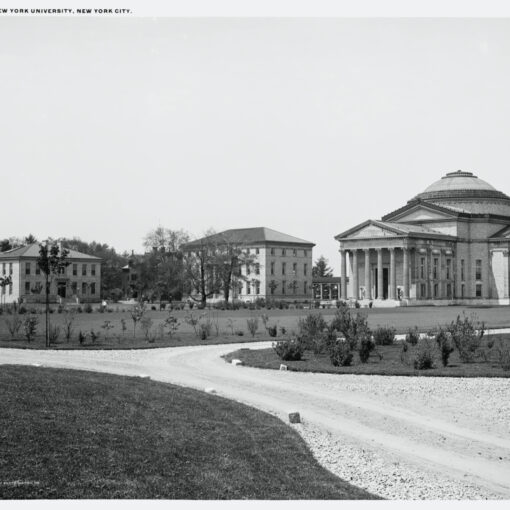November 14-15, 2023 @ NYU
726 Broadway, New York City
Room 940
Organizers: Ibrahima Bah, Michele Del Zotto, Constantin Teleman, Yifan Wang
TENTATIVE SCHEDULE
TUESDAY
| 9:30 – 11:00 ::: coffee/tea and informal discussion/short Q&A | |
| 11:00 – 11:50 ::: Shu-Heng Shao | |
| 12:00 – 12:50 ::: Michele Del Zotto | |
| lunch break | |
| 2:30 – 3:20 ::: Victor Ostrik | |
| coffee/tea and discussion | |
| 4:00 – 5:00 ::: Discussion session |
WEDNESDAY
| 9:30 – 10:20 ::: Jonathan Heckman | |
| coffee break | |
| 11:00 – 11:50 ::: Tomer Schlank | |
| lunch break and discussion | |
| 2:30 – 3:20 ::: Yifan Wang | |
| coffee/tea and discussion |
ABSTRACTS
Michele Del Zotto (Uppsala University)
Higher Structure of Chiral Symmetry
In this talk we will discuss the higher structure of the chiral symmetry of massless QED. There are two main messages from our study: the first one is that the higher-associators have detectable consequences on correlators, and therefore are interesting properties of the symmetry. The second is that one can exploit partition functions on curved spaces with non-trivial topology to probe the higher structure of symmetry. In particular, we find an interesting strategy to derive Ward identities based on decorating morphisms in surgery theory with morphisms in the symmetry category. Along the way, we comment on a relation between (higher) associators and anomalies. Based on joint work with Christian Copetti, Kantaro Ohmori and Yifan Wang.
Jonathan Heckman (UPenn)
SymTrees and Multi-Sector QFTs
The global symmetries of a D-dimensional QFT can, in many cases, be captured in terms of a (D+1)-dimensional symmetry topological field theory (SymTFT). In this work we construct a (D+1)-dimensional theory which governs the symmetries of QFTs with multiple sectors which have connected correlators that admit a decoupling limit. The associated symmetry field theory decomposes into a SymTree, namely a treelike structure of SymTFTs fused along possibly non-topological junctions. In string-realized multi-sector QFTs, these junctions are smoothed out in the extra-dimensional geometry. Time permitting, we explain how we can use this perspective to study the fate of higher-form symmetries in the context of holographic large M averaging where the topological sectors of different large M replicas become dressed by additional extended operators associated with the SymTree. Based on joint work with F. Baume, M. Hubner, E. Torres, A.P. Turner, and X. Yu.
Victor Ostrik (U. Oregon)
Growth in tensor powers
This talk is based on joint work with K.~Coulembier, P.~Etingof, D.~Tubbenhauer. Let $\Gamma$ be any group and let $V$ be a finite dimensional representation of $\Gamma$ over arbitrary field. We consider tensor powers $V^{\otimes n}$ of V and their decompositions into indecomposable summands. Let $b_n(V)$ be the total number of indecomposable summands in $V^{\otimes n}$. We prove that
$$\lim_{n\to \infty} \sqrt[n]{b_n(V)}=\dim(V).$$
Similarly let $d_n(V)$ be the number of indecomposable summands of $V^{\otimes n}$ with dimension not divisible by the characteristic of the field. Then we define
$$\delta(V):=\lim_{n\to \infty} \sqrt[n]{d_n(V)}.$$
The real number $\delta(V)$ is an interesting invariant of the representation $V$. Using theory of tensor categories we show that this invariant is additive (under direct sums), multiplicative and takes values in algebraic integers.
Tomer Schlank (Hebrew University, Jerusalem)
Notions of algebraic closeness in homotopy theory and quantum field theories.
A key paradigm in understanding fields (in the algebra sense) is to go to an algebraic closure and than consider the action of the Galois group. We shall discuss how this paradigm appears under more categorical gize in the worlds of homotopy theory and higher category theory and how algebraic closeness seems to be a desired property for targets of quantum fields theories. This talk is based on several joint works with T. Barthel, , B. Ben-Moshe, R. Burklund, C.Carmeli, S. Keidar, A. yuan and L. Yanovski,
Shu-Heng Shao (YITP, Stony Brook)
Non-invertible symmetries in 1+1d lattice models
I will discuss non-invertible symmetries in 1+1d lattice models with a tensor-product Hilbert space, including the transverse-field Ising model and its deformation. The Kramers-Wannier duality operator on the lattice mixes with the lattice translation, and obeys a different non-invertible algebra compared to the continuum one.
Yifan Wang (NYU)
On Gauging Non-Invertible Symmetries
I will discuss the physics of gauging non-invertible symmetries using concrete examples in d=2 quantum field theory and comment on connections to results in category theory and subfactor theory.
LIST OF PARTICIPANTS
Bobby Acharya (ICTP)
Andrea Antinucci (SISSA)
Fabio Apruzzi (Padova)
Francesco Benini (SISSA)
Federico Bonetti (Durham U)
Daniel Brennan (UCSD)
Jennifer Brown (Edinburgh U)
Christian Copetti (Oxford U)
Thibault Decoppet (Harvard U)
Colleen Delaney (Berkeley U)
Michele Del Zotto (Uppsala U)
Tudor Dimofte (Univ Edinburgh)
Dan Freed (UT Austin, Harvard U)
Cesar Galindo (Univ de los Andes)
Jonathan Heckman (UPenn)
Ken Intriligator (UCSD)
Theo Johnson-Freyd (Dalhousie U, PI)
Zohar Komargodski (SCGP Stony Brook)
Lukas Mueller (PI)
Cris Negron (USC)
Victor Ostrik (U Oregon)
Sunghyuk Park (Harvard U)
Hector Peña-Pollastri (IU Bloomington)
Julia Plavnik (IU Bloomington)
David Reutter (Hamburg)
Giovanni Rizi (SISSA)
Iordanis Romaidis (Edinburgh U)
Eric Rowell (TAMU)
Konstantinos Roumpedakis (Edinburgh U)
Sean Sanford (Ohio State)?
Sakura Schafer-Nameki (Oxford U)
Shu-Heng Shao (Stony Brook U)
Claudia Scheimbauer (TU Munich )
Tomer Schlank (HUJI)
Christopher Schommer-Pries (Notre Dame U)
Nathan Seiberg (Princeton IAS)
Noah Snyder (IU Bloomington)
Constantin Teleman (Berkeley U)
Kevin Walker (Station Q)
Yifan Wang (NYU)
Zhenghan Wang (UCSB)
Yunqin Zheng (YITP)




